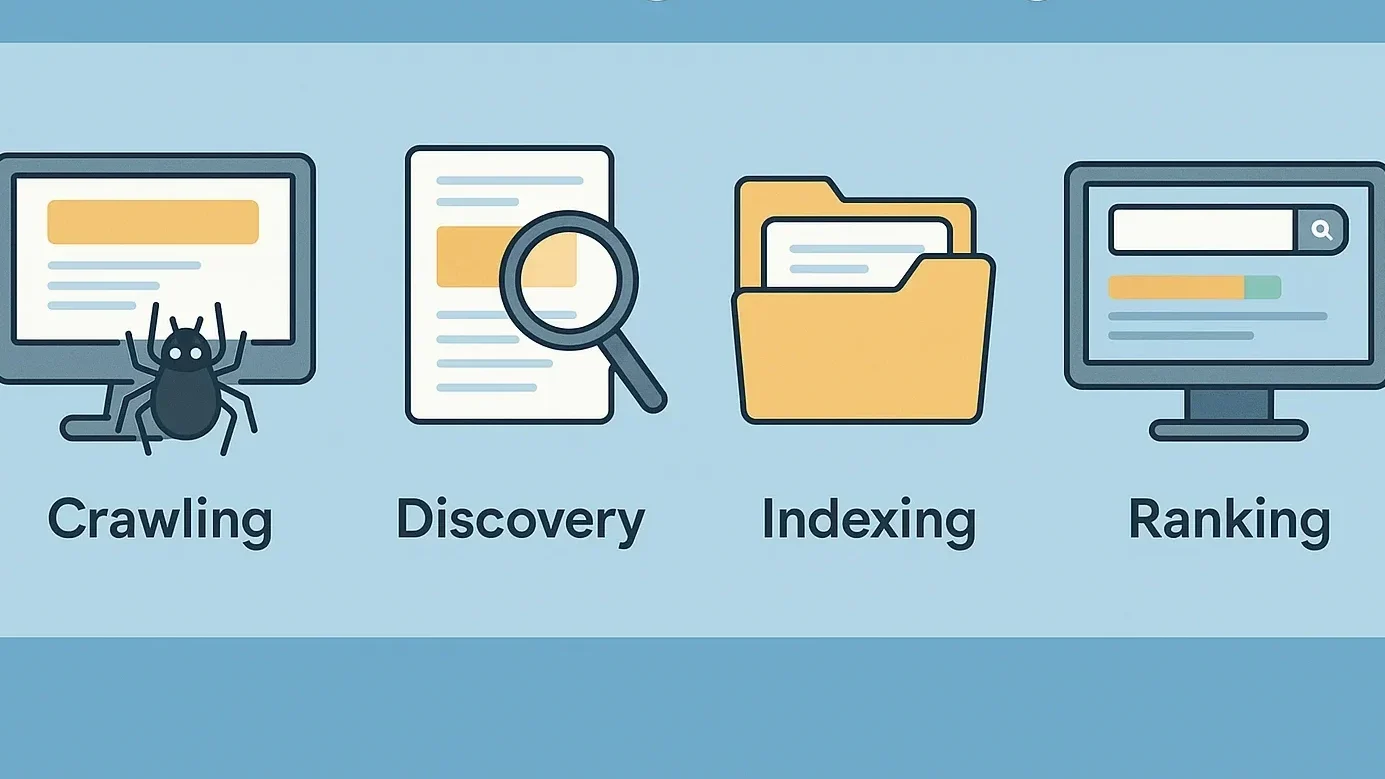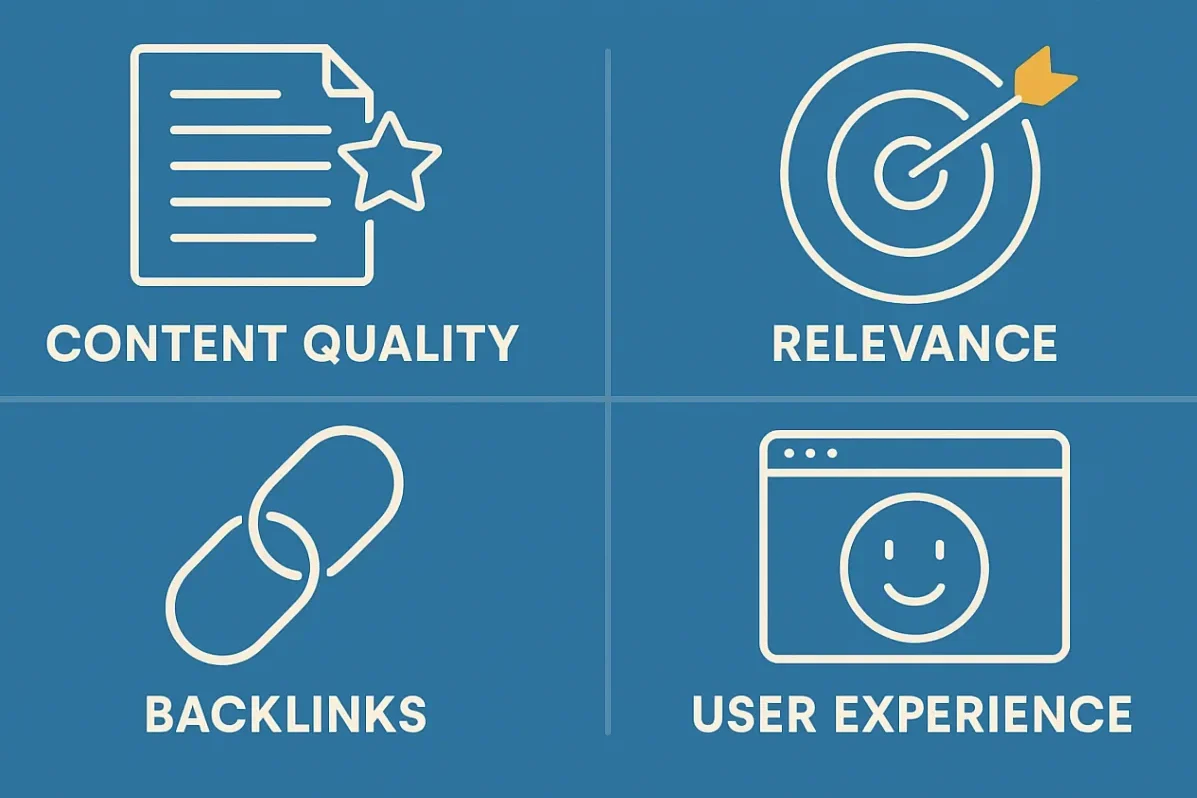Billions of searches occur globally every second, and search engines like Google or Bing deliver millions of results in milliseconds. Understanding how search algorithms determine which websites appear at the top is crucial for anyone needing online visibility. It uses complex algorithms that consider hundreds of factors, from content relevance to mobile page load speed.
How Search Engines Discover and Catalog Web Pages

Before any website can appear in search results, it must first be found and understood. This process begins with crawling, where automated programs called web crawlers or “spiders” systematically browse the internet, following links from one page to another.
The Crawling Process
Web crawlers start with a list of known web addresses and continuously discover new pages by following hyperlinks. When a crawler visits your website, it examines your content, images, videos, and links to other pages. The frequency of these visits depends on several factors, including how often you update your content and your website’s overall authority.
It doesn’t crawl every page on the internet daily. Popular websites with frequently updated content might be crawled multiple times per day, while smaller or less active sites might be visited weekly or monthly. You can influence crawling frequency by creating fresh, high-quality content regularly and ensuring your website has a clear, logical structure.
Building the Index
After crawling your pages, search platforms store the information in massive databases called indexes. Think of an index as a giant library catalog that contains information about every web page the search engine has discovered. This includes the page’s content, keywords, images, and metadata.
The indexing process involves analyzing and organizing content so search engines can quickly retrieve relevant pages when users submit queries. During indexing, search platforms determine what each page is about, how it relates to other content, and whether it provides value to users.
The Key Factors That Determine Rankings

Search engine algorithms evaluate numerous ranking factors to determine which pages deserve top positions. These factors fall into three main categories: on-page SEO, off-page SEO, and technical SEO.
On-Page SEO Elements
On-page SEO refers to optimizations you can make directly on your website to improve rankings. Keywords play a crucial role here, but modern search engines have evolved far beyond simple keyword matching.
Content quality has become the most important on-page factor. Search platforms analyze whether your content thoroughly answers user questions, provides accurate information, and offers genuine value. Pages with comprehensive, well-researched content typically outrank thin or superficial articles.
User experience signals also significantly influence rankings. It tracks metrics like how long visitors stay on your page, whether they immediately return to search results (called “bounce rate”), and how they interact with your content. Pages that keep users engaged tend to rank higher than those that don’t.
Off-Page SEO Considerations
Off-page SEO encompasses factors outside your direct control, primarily how other websites and users interact with your content. Backlinks, links from other websites to yours, remain one of the strongest ranking signals.
However, not all backlinks carry equal weight. Links from authoritative, relevant websites in your industry provide more value than links from low-quality or unrelated sites. It also considers the context surrounding these links and whether they appear natural or artificially created.
Domain authority, which reflects your website’s overall trustworthiness and expertise, influences how well individual pages rank. Building domain authority takes time and requires consistently publishing valuable content, earning quality backlinks, and maintaining a positive online reputation.
Social signals, while not direct ranking factors, can indirectly impact your search visibility. When content gets shared widely on social media platforms, it often attracts more visitors and potential backlinks, which can improve rankings over time.
Technical SEO Fundamentals
Technical SEO involves optimizing your website’s infrastructure to help search engines crawl, index, and understand your content more effectively. Site speed has become increasingly important, especially for mobile searches. Pages that load slowly provide poor user experiences and typically rank lower than faster alternatives.
Mobile-friendliness is now essential for good rankings. Since mobile searches surpassed desktop searches several years ago, it prioritizes websites that work well on smartphones and tablets. Responsive design, readable text without zooming, and touch-friendly navigation elements all contribute to mobile optimization.
Site architecture affects how search algorithms navigate and understand your website. Clear URL structures, logical internal linking, and properly organized content hierarchies help it to index your pages more effectively. XML sitemaps and robots.txt files provide additional guidance for search engine crawlers.
Major Algorithm Updates and Their Impact
It continuously refines its algorithms to provide better results for users. Major updates can significantly impact website rankings, sometimes overnight.
Google’s Panda update, launched in 2011, targeted websites with low-quality or duplicate content. This update emphasized the importance of creating original, valuable content rather than trying to game the system with keyword stuffing or thin articles.
The Penguin update focused on penalizing websites that used manipulative link-building practices. This algorithm change made it risky to purchase links or participate in link schemes, pushing website owners toward earning links through quality content and genuine relationships.
More recent updates have emphasized expertise, authoritativeness, and trustworthiness (E-A-T), particularly for websites in health, finance, and other sensitive topics. These updates reward content created by qualified experts and published on authoritative domains.
Core Web Vitals, introduced as ranking factors in 2021, measure specific aspects of user experience, including loading speed, interactivity, and visual stability. These metrics reflect Google’s continued focus on prioritizing websites that provide excellent user experiences.
Professional SEO firms in Utah and other locations often help businesses navigate these algorithm changes by staying up to date with best practices and adjusting strategies accordingly.
Conclusion
Understanding how search algorithms work is just the beginning. To improve your website’s rankings, focus on creating high-quality content that genuinely helps your audience. Research what questions your potential customers are asking and provide comprehensive, accurate answers.











